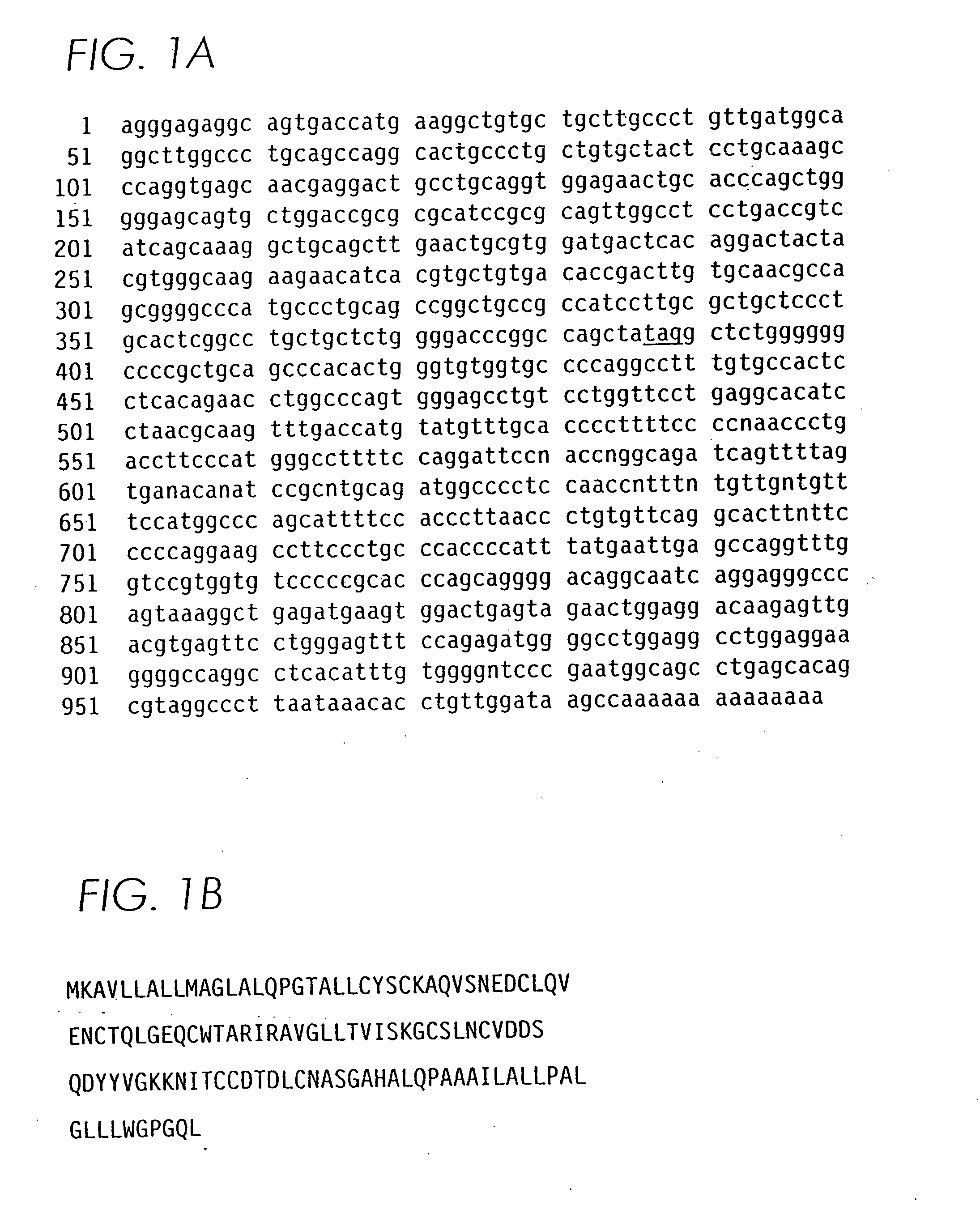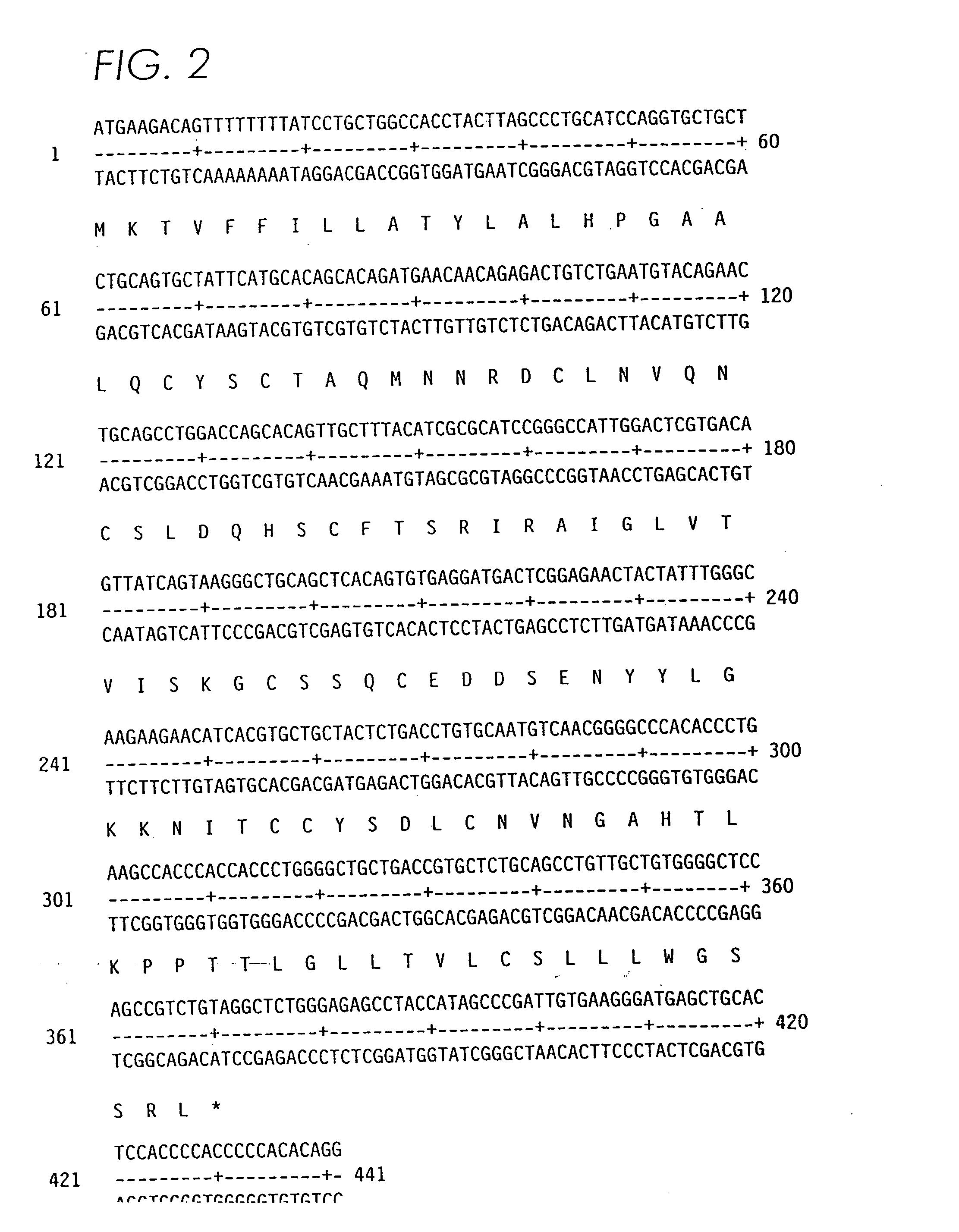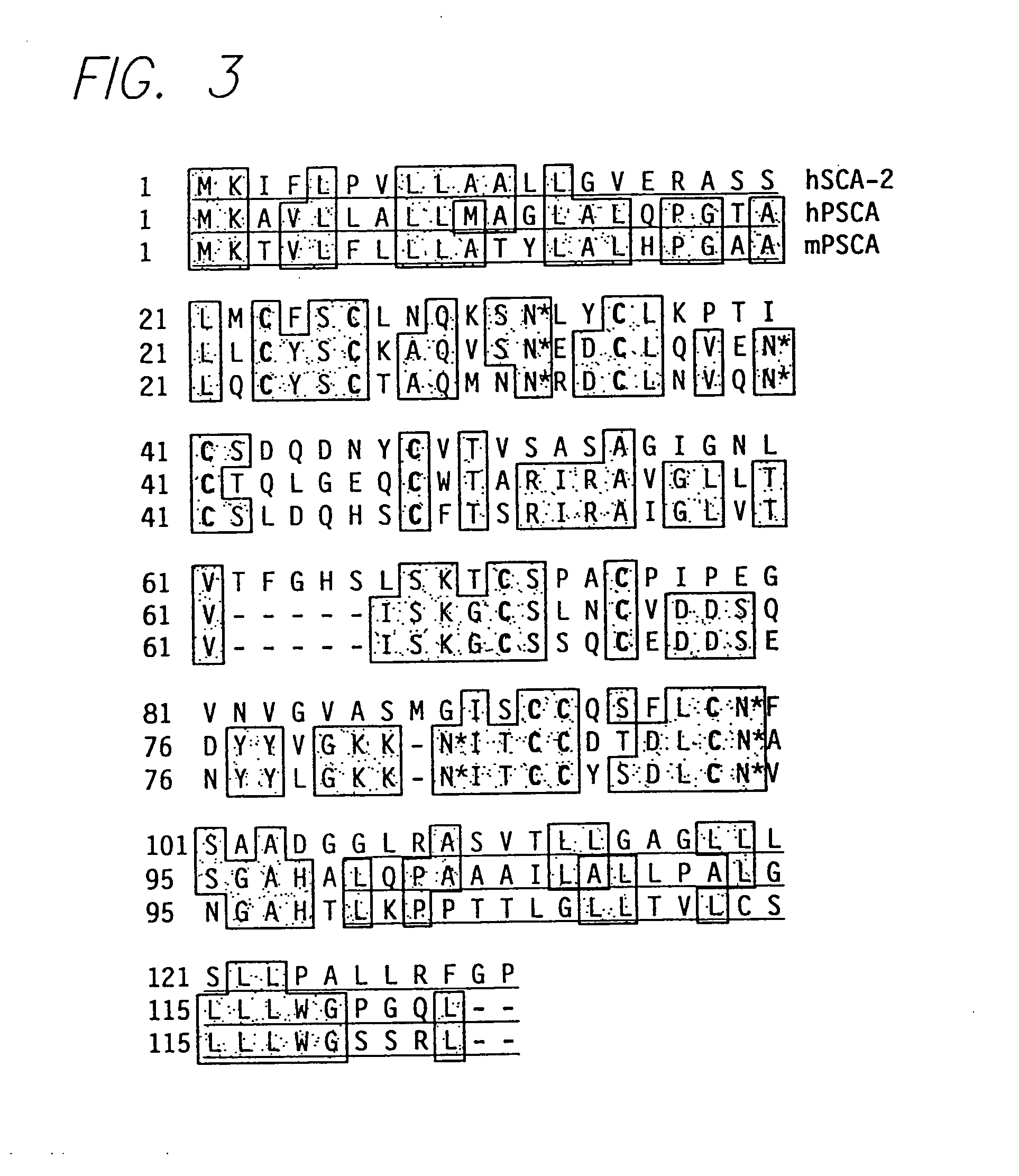PSCA antibodies and hybridomas producing them
a technology of psa and hybridoma, which is applied in the field of psa antibodies and hybridoma producing them, can solve the problems of rendering psa expression useless for distinguishing malignant prostate cancer from bph or normal glands, and achieve the effect of promoting immune-mediated destruction of prostate tumors and great upregulation of expression
- Summary
- Abstract
- Description
- Claims
- Application Information
AI Technical Summary
Benefits of technology
Problems solved by technology
Method used
Image
Examples
example 1
Identification And Molecular Characterization Of A Novel Prostate Cell Surface Antigen (PSCA)
Materials and Methods
[0172] LAPC-4 Xenografts: LAPC-4 xenografts were generated as described in Klein et al, 1997, Nature Med. 3: 402-408.
[0173] RDA Northern Analysis and RT-PCR: Representational difference analysis of androgen dependent and independent LAPC-4 tumors was performed as previously described (Braun et al., 1995, Mol. Cell. Biol. 15: 4623-4630). Total RNA was isolated using UltraspecR RNA isolation systems (Biotecx, Houston, Tex.) according to the manufacturer's instructions. Northern filters were probed with a 660bp RDA fragment corresponding to the coding sequence and part of the 3′ untranslated sequence of PSCA or a ˜400 bp fragment of PSA. The human multiple tissue blot was obtained from Clontech and probed as specified. For reverse transcriptase (RT)-PCR analysis, first strand cDNA was synthesized from total RNA using the GeneAmp RNA PCR core kit (Perkin Elmer-Roche, New...
example 2
Biochemical Characterization Of PSCA
[0185] This experiment shows that PSCA is a glycosylated, GPI-anchored cell surface protein
Materials and Methods
[0186] Polyclonal Antibodies and Immunoprecipitations: Rabbit polyclonal antiserum was generated against the synthetic peptide -TARIRAVGLLTVISK- and affinity purified using a PSCA-glutathione S transferase fusion protein. 293T cells were transiently transfected with pCDNA II (Invitrogen, San Diego, Calif.) expression vectors containing PSCA, CD59, E25 or vector alone by calcium phosphate precipitation. Immunoprecipitation was performed as previously described (Harlow and Lane, 1988, Antibodies: A Laboratory Manual. (Cold Spring Harbor Press)). Briefly, cells were labeled with 500 uCi of trans35S label (ICN, Irvine, Calif.) for six hours. Cell lysates and conditioned media were incubated with 1 μg of purified rabbit anti-PSCA antibody and 20 ul protein A sepharose CL4B (Pharmacia Biotech, Sweden) for two hours. For deglycosylation, im...
example 3
Isolation Of cDNA Encoding Murine PSCA Homologue
[0190] The human PSCA cDNA was used to search murine EST databases in order to identify homologues for potential transgenic and knockout experiments. One EST obtained from fetal mouse and another from neonatal kidney were 70% identical to the human cDNA at both the nucleotide and amino acid levels. The homology between the mouse clones and human PSCA included regions of divergence between human PSCA and its GPI-anchored homologues, indicating that these clones likely represented the mouse homologue of PSCA. Alignment of these ESTs and 5′ extension using RACE-PCR provided the entire coding sequence (FIG. 2).
PUM
| Property | Measurement | Unit |
|---|---|---|
| pH | aaaaa | aaaaa |
| ionic strength | aaaaa | aaaaa |
| pH | aaaaa | aaaaa |
Abstract
Description
Claims
Application Information
 Login to View More
Login to View More - R&D
- Intellectual Property
- Life Sciences
- Materials
- Tech Scout
- Unparalleled Data Quality
- Higher Quality Content
- 60% Fewer Hallucinations
Browse by: Latest US Patents, China's latest patents, Technical Efficacy Thesaurus, Application Domain, Technology Topic, Popular Technical Reports.
© 2025 PatSnap. All rights reserved.Legal|Privacy policy|Modern Slavery Act Transparency Statement|Sitemap|About US| Contact US: help@patsnap.com



